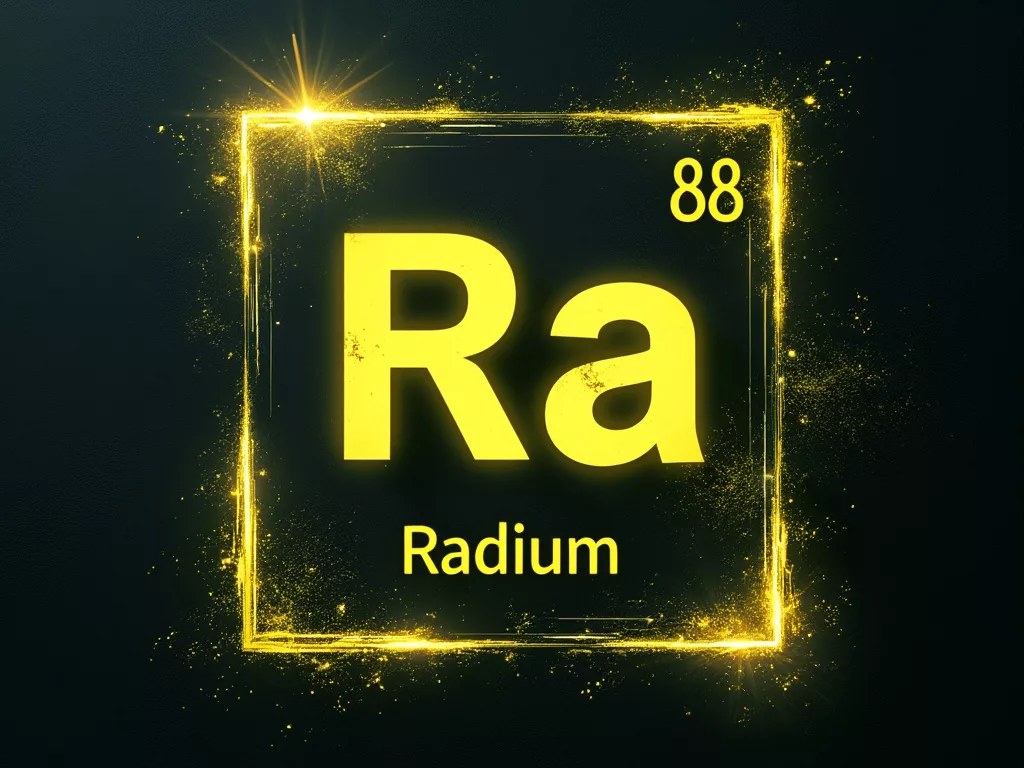Radium, often associated with its luminescent glow, is a highly radioactive metal that has played an important role in both science and industry. Radium is also one of the most dangerous metals to humans. Let’s take a closer look at this element.
Table of Contents
Basic Information about Radium
- Atomic Number: 88
- Symbol: Ra
- Atomic Mass: 226
- Discovered by: Marie Curie and Pierre Curie in 1898
What is Radium?
Radium is a silvery-white metal that is part of the alkaline earth metals group. It’s not found free in nature due to its high radioactivity but is extracted from uranium ores. Radium decays into radon gas, which is itself radioactive.
The story of radium begins with the Curies, who discovered it while researching the effects of radioactivity. Marie Curie named the element after the Latin word for “ray” due to its ability to emit intense radiation.
Properties of Radium
- Luminescence: One of the most distinctive features of radium is its ability to glow in the dark, a phenomenon known as radioluminescence. This was once used in watch dials and instrument panels.
- Radioactivity: Radium is extremely radioactive. It undergoes alpha decay, releasing energy that can be harnessed for medical purposes but also poses significant health risks.
Read About Osmium, the Heaviest Element on Earth
Uses of Radium
- Medical Treatments: Historically, radium was used in cancer treatment, providing radiation directly to tumors. However, due to safer alternatives, its use has significantly decreased.
- Industry: Before the dangers of radioactivity were fully understood, radium was used in luminous paints, although this practice has been discontinued for safety reasons.
Health and Environmental Concerns of Radium
Radium’s radioactivity makes it a double-edged sword. While it has medical applications, exposure to radium can lead to serious health issues, including bone cancer. It accumulates in bones, leading to radiation damage over time. Environmentally, radium can contaminate water supplies, making it a concern in areas with uranium mining.
Discovery of Radium by the Curies marked a significant milestone in understanding radioactivity, leading to numerous scientific advancements. Today, radium’s use is highly regulated due to its hazardous nature. Small amounts are still used in research, particularly in studying the effects of radiation. It’s also used in the calibration of radiation detectors.
























